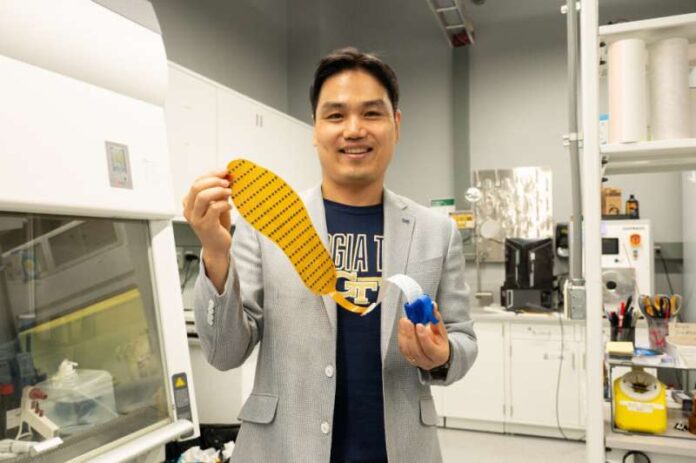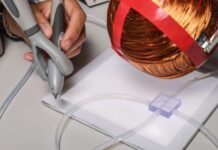Gait impairment, or difficulty walking, is a significant risk for stroke and Parkinson’s patients. Not only do gait abnormalities slow a person down, but they are also a leading cause of falls. Physical therapy, which is time-consuming and expensive, is frequently the only cure.
A new wearable electronic device that can be placed into any shoe is able to solve this problem. Georgia Tech researchers has created this device, made up of over 170 small, flexible sensors that monitor foot pressure—an important parameter for determining whether someone is off balance. The sensor records pressure data, which the researchers can then use to forecast which changes cause falls.
The researchers described their findings in the paper “Flexible Smart Insole and Plantar Pressure Monitoring Using Screen-Printed Nanomaterials and Piezoresistive Sensors.” It was the cover story for the August issue of ACS Applied Materials & Interfaces.
Pressure Points
Smart footwear is not new, but making it both functional and inexpensive has proven virtually impossible. W. Hong Yeo’s lab has built a reputation for manufacturing flexible medical devices. The researchers use the established commercial method of screen-printing electronics to create sensors. They recognized they could use this printing process to alleviate walking difficulties.
Yeo’s team prioritized making the gadget user-friendly. A crucial innovation was ensuring that the wearable was thin enough to be comfortable for the wearer while still being straightforward to combine with other assistive devices. The device connects to a smartphone via Bluetooth, allowing it to collect data and potentially integrate with existing health monitoring programs.
These developments offer promising real-world adaptation opportunities. The garment, which is lightweight and compact, might be combined with robotic devices to assist stroke and Parkinson’s patients, as well as the elderly, in walking. The large number of sensors may make it easier for researchers to use a machine learning algorithm to forecast falls. The technology may even allow professional athletes to analyze their performance.
Yeo said:
I’m trying to bridge the gap between the lack of available devices in hospitals or medical practices and the lab-scale devices,” . “We want these devices to be ready now—not in 10 years.”




